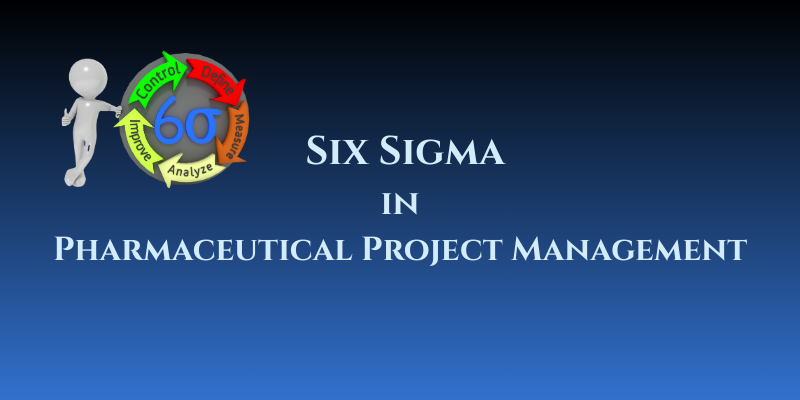Six Sigma in Pharmaceutical Project Management
Six Sigma is a data-driven methodology aimed at improving business processes by reducing defects, variations, and inefficiencies. It was originally developed by Motorola in the 1980s and later popularized by companies like General Electric.
Six Sigma uses a structured approach to problem-solving and decision-making, primarily through two methodologies:-
- DMAIC (Define, Measure, Analyze, Improve, Control) – Used for improving existing processes.
- DMADV (Define, Measure, Analyze, Design, Verify) – Used for designing new processes or products.
Establish Leadership Commitment :
- Gain buy-in from top management to support Six Sigma initiatives. Appoint a Champion (executive leader) and Master Black Belt to drive the program.
Define Goals & Align with Business Strategy:
- Identify key business problems and customer needs.
- Set clear objectives, such as reducing defects, improving efficiency, or increasing customer satisfaction.
Train & Certify Your Team:
- Select employees for different Six Sigma roles (Yellow, Green, Black Belts).Provide Six Sigma training and certification through a recognized body (ASQ, IASSC, etc.).
Select & Launch Pilot Projects:
- Choose an area with measurable impact (e.g., reducing defects in production).Use the DMAIC methodology to analyze and improve the process.
Implement Data-Driven Decision Making:
- Use statistical tools like Pareto Charts, Fishbone Diagrams, and Control Charts.Utilize software like Minitab, JMP, or Excel for Six Sigma analytics.
Standardize & Scale:
- Document best practices and successful improvements.Expand Six Sigma to other processes and departments.
Monitor & Sustain Results:
- Implement control mechanisms to maintain improvements. Conduct regular audits and continuous improvement cycles.
Roles in Six Sigma:
- White Belt: Basic knowledge of six sigma.
- Yellow Belt: Basic understanding, assists in projects.
- Green Belt: Leads small projects and supports larger ones.
- Black Belt: Leads major projects, analyzes data, and mentors others.
- Master Black Belt: Coaches Black Belts and leads Six Sigma strategy.
- Champion: Senior executive who supports Six Sigma initiatives.
Key Concepts of Six Sigma:
Focus on Quality: Reduces defects and errors in processes.
- Data-Driven Decision Making: Uses statistical tools and metrics.
- Customer-Centric: Ensures customer satisfaction by improving quality.
- Continuous Improvement: Encourages ongoing process optimization.
Read also:
Resource Person: Susmita







